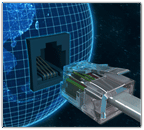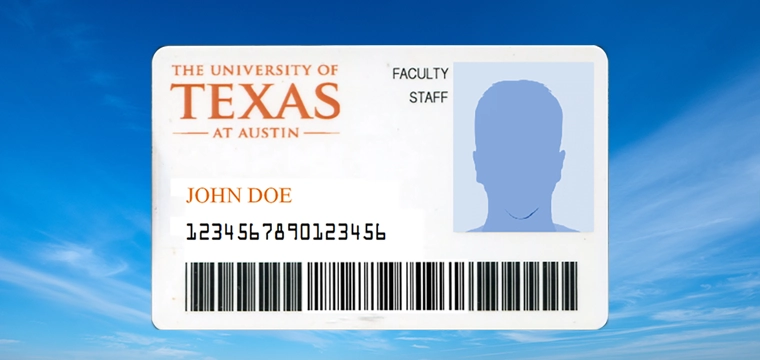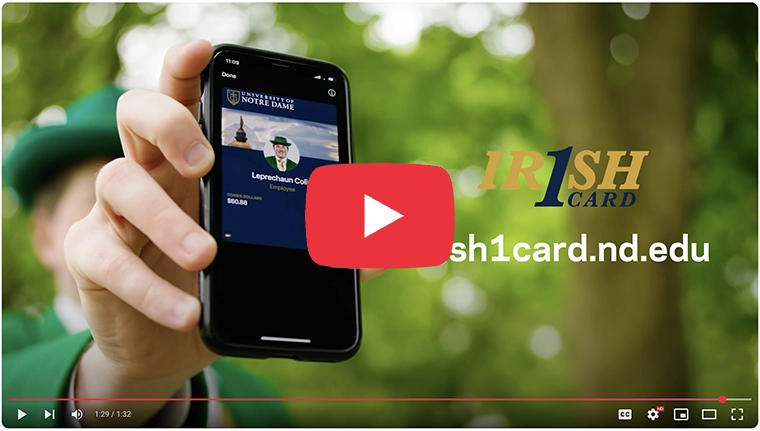 “Software as a service” model takes off
“Software as a service” model takes off
By Andy Williams, Contributing Editor
Colleges and universities aren’t that different from corporations. Educational institutions are under the same pressure to keep costs down, and anything that can be done to help institutions save money piques their interest.
That’s one of the big selling points of a relatively new concept called software as a service, or SaaS for short. Many may know it by its precursor: application service provider, or ASP.
But SaaS better defines what the service actually is: software, or systems built on that software that you don’t actually own or maintain. It’s basically rented. But it has many advantages over actually diving headfirst into a system that you must learn from the ground up and then manage. And what do you do when it’s time to upgrade or, worse yet, some bugs surface that bring down your system?
Taran Lent, vice president of product development for campus card provider CardSmith says the company offers an alternative to the own and self-operate model. “We are a managed service provider, which is very different from selling software and leaving the rest to the client to figure out. We provide a web-based technology solution from a national processing center combined with outsourced management services.”
For another campus card provider – Ireland-based SmartCentric Technologies International – SaaS fits perfectly into its ongoing philosophy of reducing ownership costs, says the company’s CEO, Kieran Timmins. SmartCentric introduced SaaS in the U.S. for the first time in the fall of 2007 at Loma Linda School of Dentistry in California. The company is in talks with two or three other schools as well.
“There are no up-front investments in terms of specialized hardware and in terms of maintenance and upgrades. That can all be managed at our secure facilities,” says Timmins. “From our point of view, we’re offering customers a more effective way to get involved.”
“What does it really cost to deliver a service to your customers?” asks Lent. “You have to factor in software, hardware, staff, software license fees, maintenance, mandatory life cycle upgrades, etc. We think the total cost of ownership for self operation is pretty darn expensive for the college. With the SaaS model, we can deliver the same service or better at a 70% or greater savings.”
CardSmith supports “everything from the operating system, software updates, and ongoing system administration,” Lent says. “In the old model, schools needed to send three or four people off to system administrator school for one to two weeks. In our model we do all of the heavy lifting for the client. There are no servers or software that the school needs to deploy locally. The school just needs to plug card terminals into standard Internet jacks around campus and they are in business.”
He adds: “There is no expensive hardware or software to buy, install and manage. And there is professional program management versus assembling and training a team to run the daily operations. And it’s pretty hard to run a program with less than two people. Most quality card programs have three to five, which is a big annual budget line. With our service, we take a lot of the expenses associated with software and hardware off the table.”
“This (SaaS model) is major for us,” adds SmartCentric’s Timmins. “The main selling point for SaaS, besides reducing cost of ownership is that it allows for an easy implementation.”
This was evident with the company’s deployment at Loma Linda. The school is a pre-doctoral, four-year institution with 400 students. It also has a dental hygiene program with more than 500 additional students.
California institution benefits from SaaS smart card solution
Loma Linda deployed SmartCentric’s Password Wallet. Each faculty member is issued a smart card with a chip containing the user’s profiles. These are the ones who have to authorize treatment plans or check off a student’s work. “They simply feed the smart card into a card reader and enter a four-digit PIN,” says Marina Moore, computer information system director at Loma Linda.
Password Wallet is an application SmartCentric launched in 2006 and is just one of many modules in its SmartCity Suite. “Password Wallet allows you to take any application that runs on a user environment,” says Timmins. It captures all the necessary passwords required to access a system’s various services. He says that before Password Wallet was installed, professors at Loma Linda often had to enter a password multiple times.
“When you insert the smart card, it retrieves the password from the card, and all you have to do is enter your PIN. If, for example, you have 10 applications you normally use, you’ll be logged into all of them at once,” says Timmins. “Loma Linda was looking for an application allowing them to simplify putting in a secure user ID and password.”
“Our doctors – about 200 of them – love it,” says Moore. “They’re dentists and are very clinically oriented. The last thing they want to do is go to a computer and type something, such as their name and password, like they had to do in the past. And they had to do that for each level of treatment that needed authentication.”
“One of the major reasons, the defining reason, that we went with SmartCentric was that it integrated very well with our patient management system.” She adds the producer of their patient management software found SmartCentric for the college.
“It really is seamless,” adds Timmins. “We could have installed this remotely, but Loma Linda was a new customer and we wanted people on site so if there was a problem we could handle it right away. We recently did an upgrade for them. We sent them an email that we were going to do it, and then later told them it was done. The only thing they noticed was that there was a slight difference on one of the screens.”
SaaS is advantageous for two reasons, says Timmins. “Obviously there’s the cost savings. But it also encompasses all the necessary high security that’s needed. That’s the same security they would have received had they bought the entire SmartCity Suite. With SaaS you only have to pay for what you’re using.”
“We like the fact that we can scale up and use the card for other purposes, like for the cafeteria, and for copies,” adds Moore. “Our first goal, though, was to just roll it out.”
Timmins says SmartCentric is “talking to our clients worldwide about using SaaS for ePurse, logical access and other SmartCity applications. Every option we can offer as a traditional software install is now available through SaaS.”
A higher level of service with SaaS
With an SaaS model, CardSmith’s clients can also outsource key management functions such as customer care, program marketing, website development, payment processing, merchant relations and daily operations, says Lent. “For example, we provide a live agent customer help desk, so if a student or parent needs support, they can call CardSmith ,and we’ll provide that support on behalf of the schools. It’s our phone that rings, not the school’s,” he adds.
“I used to manage the Dartmouth College campus card operation. Its office hours were 8 a.m. to 4 p.m. If you needed support, that’s when you got it,” says Lent. “With the SaaS model, you can offer professional level customer care to students and parents around the clock. We track call volumes and wait times and make sure all calls are answered within 30 seconds. This is a higher level of service than is possible if a school only has one or two customer care employees.”
As with SmartCentric, CardSmith’s clients can “pick and choose the services they need. It depends on the scope of the program and what kind of appetite the school has for self management. Some want to handle the marketing and care themselves so they’re only outsourcing the technology while others outsource 100% of their program.”
He adds: “Outsourcing services is a general trend in higher education. Schools outsource many services such as dining operations, vending, laundry and bookstore today to specialized third-party providers. Now schools have the option to outsource their campus card operations as well.”
One downside, if it can be called that, is that since SaaS relies on Internet-communications, so if the Internet is unavailable, services can theoretically be impacted. “In reality, terminals can operate when the local network or Internet are down in a special offline mode,” says Lent. “And if you think about it, most credit and debit card commerce in North America is processed over the Internet and phone lines every day, so the model is mature and well proven outside of higher education.”
Software updates, as SmartCentric’s Timmins pointed out, are also pretty seamless and easy using SaaS. “If we want to add a new feature, since we manage everything centrally, it’s easy to perform a global software update,” says Lent. “With other companies, if they have 800 customers, each behind a different firewall, they need to create a software patch and let their customers know it’s available. Someone on campus then has to test it and roll it into production. Software release cycles in the traditional paradigm are a big and costly process to manage and are ultimately reflected in the price tag.”
An ideal fit for small to mid-sized institutions and community colleges
Lent sees SaaS as ideal for the mid- to smaller-sized schools, or for those just getting started in the campus card area. “Most of the schools we talk with do not have resident staff resources with card program management experience,” says Lent.
“We also see schools with IT departments that are stretched thin, are overworked and are on tight and shrinking budgets. The last thing they need is to be responsible for one more complex system. With us, because there is no local system, we are able to manage the infrastructure for them. All they need to do is to plug their terminals into the Internet.”
Then there are the two-year institutions that have no, or very limited, card programs. “Now there is a way for community colleges to participate and to have a full-featured program,” says Lent.
“What we see with community colleges and with private high schools is that they see the benefits of a cashless campus, but at what price?” asks Lent. “Usually up front costs are too great, and they don’t have that kind of budget. Now that we’ve taken a lot of the complexity out of the service model, we’re making it more available and affordable for smaller schools. In fact, we do business with several community colleges and private high schools already, and I believe there are many more that will follow in the years to come.”
Lent says some schools “start really simple, maybe with just dining and the bookstore, then next year they’ll add self service like laundry, vending and copying. If a school asks us to implement everything, we can deploy a school in about 12 weeks, including all applications. Our model lends itself to very rapid implementation cycles. We leverage the schools’ existing campus network to transport transactions to our processing center. The school has the responsibility of issuing the cards since they are a security credential on campus in addition to being a financial device. Although there are a lot of moving parts, we have worked very hard to simplify things.”
Timmins agrees that SaaS would be “an ideal solution particularly for smaller schools. It would be a good fit for them. We’ve done some research in talking to our customers around the globe. All the things we’ve seen suggest this is something folks would want. It takes away the need for a specialized staff and minimizes hardware requirements.”
Lent will be the first to admit, though, that SaaS isn’t for everybody. “For schools with big investments in traditional systems and existing staff, the economics to change may not exist, at least in the short term. But, with the increasing cost trajectory of software licensing and mandatory upgrade cycles that can cost $100,000 or more, some self operators may think twice, especially if their programs are not performing at optimal levels.”
And of course, he stresses “for the schools that are still without a campus card program, the small and medium-sized schools, SaaS and program outsourcing is a wonderful new alternative to help them offer a high impact and professional service to their campus quickly and without all of the usual cost and administrative headaches.”




